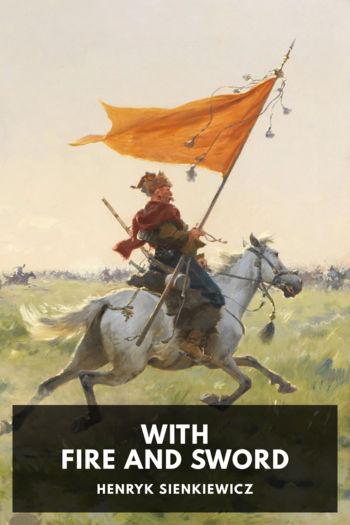
Description
Quo Vadis: A Narrative of the Time of Nero was first published in Polish as Quo vadis. Powieść z czasów Nerona. Among Henryk Sienkiewicz’s inspirations was the painting Nero’s Torches (Pochodnie Nerona) by fellow Pole Henryk Siemiradzki; the painting, which depicts cruel persecution of Christians, serves as the cover art for this ebook edition. Sienkiewicz incorporates extensive historical detail into the plot, and notable historical figures serve as prominent characters, including the apostles Simon Peter and Paul of Tarsus, Gaius Petronius Arbiter, Ofonius Tigellinus, and the infamous Nero himself. Sienkiewicz used the historical basis of the novel as an opportunity to describe in detail the lives of the citizenry under Nero’s cruel and erratic rule.
Sienkiewicz was awarded the 1905 Nobel Prize in Literature in part for his authorship of Quo Vadis. The book was exceedingly popular both domestically and internationally: it was translated into more than 50 languages, sold 800,000 copies in the U.S. within a period of eighteenth months, and was the best selling book of 1900 in France.
The plot of Quo Vadis follows the love story of Marcus Vinicius and Lygia. He is a young, charming, up-and-coming Roman patrician; she is a high-ranking hostage, a former princess of a country conquered by Rome. Vinicius’s immediate infatuation with Lygia is complicated by her devout Christianity, a faith barely tolerated in Rome of the time. As the painting that inspired the novel foreshadows, Rome burns in a great fire, and Christians receive the blame. The subsequent persecution of the Christians in Rome serves as the main obstacle between the two lovers.
Sienkiewicz portrays a pro-Christian narrative throughout the book, with the apostles Peter and Paul serving as spiritual mentors to both Vinicius and Lygia. The novel’s title translates to “Where are you going, Lord?”, a quote from the apocryphal Christian text the Acts of Peter, which depicts Peter’s death. The text describes how while fleeing Rome, Peter asks a vision of Jesus the titular question, to which Jesus replies that he is returning to Rome to lead the Christians since Peter, their leader, is deserting them. Peter then realizes he must turn back and remain with his people, despite the cost. Quo Vadis depicts this exchange, along with Paul’s fate and the deaths of Nero and Petronius, Vinicius’s wise and worldly uncle and mentor. Sienkiewicz contrasts Petronius’s and Nero’s hedonism with Vinicius’s and Lygia’s journey to a deeper faith in their God, and with Peter and Paul’s faithful martyrdom, to great effect. As such, the novel is not just a love story, but also a thoughtful reflection on how one’s way of living affects how they see death.

Description
Goodwill in the seventeenth century Polish Commonwealth has been stretched thin due to the nobility’s perceived and real oppression of the less well-off members. When the situation reaches its inevitable breaking point, it sparks the taking up of arms by the Cossacks against the Polish nobility and a spiral of violence that engulfs the entire state. This background provides the canvas for vividly painted narratives of heroism and heartbreak of both the knights and the hetmans swept up in the struggle.
Henryk Sienkiewicz had spent most of his adult life as a journalist and editor, but turned his attention back to historical fiction in an attempt to lift the spirits and imbue a sense of nationalism to the partitioned Poland of the nineteenth century. With Fire and Sword is the first of a trilogy of novels dealing with the events of the Khmelnytsky Uprising, and weaves fictional characters and events in among historical fact. While there is some contention about the fairness of the portrayal of Polish and Ukrainian belligerents, the novel certainly isn’t one-sided: all factions indulge in brutal violence in an attempt to sway the tide of war, and their grievances are clearly depicted.
The initial serialization and later publication of the novel proved hugely popular, and in Poland the Trilogy has remained so ever since. In 1999, the novel was the subject of Poland’s then most expensive film, following the previously filmed later books. This edition is based on the 1898 translation by Jeremiah Curtin, who also translated Sienkiewicz’s later (and perhaps more internationally recognized) Quo Vadis.